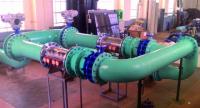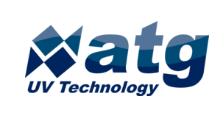 Add My Company
Add My Company
Sign In
UV set to dominate the municipal industry
22-06-2012

The use of Ultra Violet (UV) light has now become standard practice in most municipal waste water treatment processes. Effluent is now starting to be recognised as a valuable resource, not a problem that needs to be dumped. Many waste water facilities are being renamed as water reclamation facilities, and whether the waste water is being discharged into a river, being used to irrigate crops, or injected into an aquifer for later recovery Ultraviolet light is now being used to ensure water is free from harmful organisms. atg UV's Technical Director Tony Leigh looks in detail at the advancements and future for UV.
Ultra Violet light was discovered in 1801. It took over 100 years to develop lamps and power supplies on a commercial scale, and a 0.2MGD drinking water plant in Marseilles, France briefly used UV light in 1910. Chlorine was the disinfectant of choice, and UV was really only used in municipal context where chlorine could not be used, or where the distribution main was itself being used as a contact vessel and the first consumers lived adjacent to the point of injection. UV light was used successfully throughout industry with brewers, pharmaceutical plants and fish farmers adopting the technology quickly.
UV gained prominence in applications where the water was itself used as the product, (bottled waters, beer, carbonated soft drinks), or where the water has a process application (wafer rises by ultra pure water, Clean in Place applications, product rise and chase applications, Ballast Water, well field injection ).
As the customer base expanded, so did the process application. UV was now being used break specific chemical bonds, sometimes by direct photolysis, but more often by the creation of highly reactive hydroxyl (OH-) radicals. Photolysis applications now include dechlorination, de-ozonation, the removal of TOC from ultra pure rise water in the semiconductor industry, and recently as a barrier to counter the threats caused by the endocrine disruptors and both metabolized and un-metabolised pharmaceutical compounds found in wastewater.
By the year 2000 several key drivers had led to the technology being routinely incorporated into wastewater processes; a flight from chemical regimes, a desire to avoid potentially carcinogenic disinfection by-products, increasing attention to the discharge of chlorine as an active substance into a receiving watersheds, and the growing re-use of tertiary treated effluent.
The early applications for re-use were limited to golf course irrigation, however applications have expanded to use the reclaimed waste water for Aquifer Storage and Recovery (ASR), and broad non potable industrial uses. The ASR applications are popular in coastal regions where aggressive water abstraction has led to brackish, saline water permeating into the water table from the sea. The ASR processes injects highly polished reclaimed effluent as a buffer between the water table and the ocean.
How does UV work? UV light between 250nm and 270nm is absorbed by the DNA in all living matter, or RNA in the case of a virus. The light causes cross bonds within the DNA structure to vibrate to the point of rupture. The UV light breaks the cross bonds in the DNA, and forms dimers. Once these bonds are broken, normal cell function quickly ceases. Replication, assimilation of food and respiration are all permanently interrupted, resulting in non viability of the organism.
For more information on UV set to dominate the municipal industry talk to atg UV Technology
Enquire Now
List your company on FindTheNeedle.

